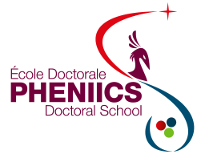Orateur
M.
Florian Geslin
(IPNO/Thales)
Description
Nowadays, the number of projects aiming at building high intensity proton linear accelerator is increasing thanks to a large field of applications: particles physics, nuclear physics, spallation source and some applications in material sciences, biology and nuclear waste reprocessing. All these linear accelerator projects are based on superconducting technology that allows high accelerating gradients in continuous mode.
The RF power coupler is one of the main components of the accelerator. It is designed to transmit the radio frequency power from the waveguide at room temperature to the cavity at 4 Kelvin. It is not only a vacuum barrier (between cavity space under vacuum and waveguides under atmospheric pressure) but also a thermal barrier between room temperature and cryogenic temperature of the cavity.
The aims of this PhD work are, to take account of the fabrication processes during the conception of couplers. These processes have an important influence on couplers performance and they are not usually included in development studies.
Last years, I performed Electromagnetic simulations (HFSS and CST), thermal and
thermo-mechanical simulations (Ansys), to build a prototype of a coupler at 704.4MHz.
I will have the opportunity to perform conditioning and high power tests on this device next summer.
In order to build 352MHz high power coupler prototype, I have simulated electromagnetic characteristics of a proper design and its response to mechanic and thermic stresses. A prototype will be built next year and it will be tested with new klystron, as radiofrequency source, at IPNO.
Simultaneously, in order to study thin layer deposition on coupler’s ceramic window and their impacts on multipacting, I am simulating multipacting (electron avalanche in resonance with RF wave) with Musicc3D, a code developed at IPNO.
Auteur principal
M.
Florian Geslin
(IPNO/Thales)
Co-auteurs
M.
Jean Lesrel
(IPNO)
Dr
Marin Chabot
(IPNO)



